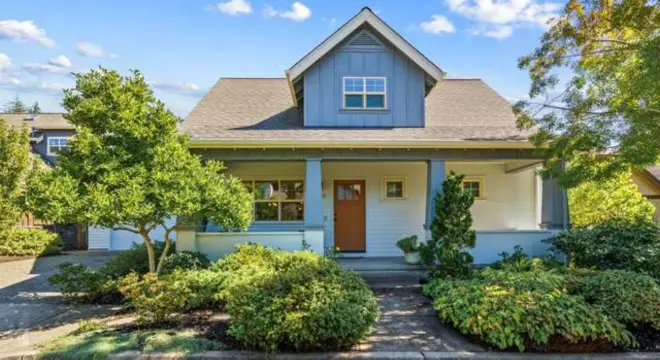Why Fall May Give Homebuyers an Edge in Today’s Market?
I’ve lost count of how many times I’ve heard people say, “Spring is the only season to buy a home.” Realtors hype it, families plan around it, and the media repeats it every year. But here’s the truth most folks overlook: fall can be a surprisingly smart time to make your move.
Think about it—you’re not fighting crowds of buyers lining up at every open house, and sellers who’ve been sitting on their listings since summer are often more open to negotiation. Add in the fact that mortgage rates and inventory behave differently this time of year, and suddenly fall doesn’t look like the “off-season” at all.
If you’ve been waiting for the right balance of choice, breathing room, and leverage at the negotiation table, fall might just be your sweet spot.
Let me ask you: when you imagine buying your home, do you want to compete in a bidding war—or quietly land a deal while everyone else is distracted by the holidays?
Seasonal Patterns in the Real Estate Market

If you’ve ever tracked the housing market closely, you know it runs in cycles. Spring usually gets all the buzz—families want to move before the school year starts, sellers flood the market, and competition heats up. By summer, things begin to cool slightly, but it’s still a pretty active season.
Then comes fall. This is when the pace shifts. According to House Logic, the frenzy of spring and summer gives way to a quieter market. Fewer buyers are house-hunting, which means the pressure eases. Sellers who listed months earlier often grow impatient and start trimming prices or offering concessions.
Winter, of course, is the slowest period. Many sellers pull their homes off the market altogether, and buyers prefer to wait until after the holidays. That’s why fall often becomes this overlooked “in-between” season—less crowded than spring, yet far from the dead market of winter.
What matters for you is recognizing this pattern. Once you understand that demand naturally dips in the fall, you can see how it creates opportunities—more negotiating power, fewer bidding wars, and a chance to inspect homes without rushing.
Have you noticed these seasonal swings in your own local market, or does it play out differently where you live?
For those just starting out or buying their first property, our detailed guide on Buying a Starter Home can give you step-by-step tips to navigate the process confidently.
Why Fall Becomes Advantageous for Buyers?
Let’s talk about why fall isn’t just “another season” but can actually tilt the odds in your favor.
First, you often have more homes to choose from than people realize. Zillow’s latest data shows the number of homes for sale is near a six-year high, up roughly 15% from last year. That means you’re not stuck with slim pickings; the market still has plenty of options. The catch? New listings start slowing down by late fall, so waiting too long can shrink that pool.
Second, there’s more breathing room. In August, the typical home stayed on the market 27 days before finding a buyer—longer than earlier in the year. That extra week or two may not sound like much, but when you’re making one of the biggest financial decisions of your life, a little extra time is priceless. You can actually compare homes, weigh your budget, and negotiate without feeling rushed.
Third, fall is when sellers get motivated. Many who listed in spring or summer are still waiting for offers. By now, they’re often willing to cut prices, cover part of the closing costs, or throw in concessions just to close before year-end. For you, that’s leverage.
And finally, fall gives you a real-world test of the home. Cooler temps, rain, even early snow expose things like insulation problems, leaks, or heating issues that you might not notice in spring. That’s valuable insight before you sign papers.
If you were buying right now, what would matter more to you: having extra choices, or being able to slow down and negotiate on your terms?
Before you jump into negotiations, it’s worth brushing up on 5 Smart Dos and Don’ts That Every Homebuyer Needs in 2025 to make sure you’re approaching offers strategically.
Risks, Trade-Offs, and What Could Go Wrong

I won’t sugarcoat it—fall isn’t perfect. There are a few risks you need to keep in mind.
Inventory can dry up. Zillow economists have already noted that new listings slowed by 7.3% in August. If that trend continues, you might find fewer fresh choices later in the season.
Interest rates are unpredictable. While many expect them to stay in the low 6% range, an unexpected economic shock could send them higher. If you’re waiting too long, you risk locking in a worse rate.
Weather makes things harder. Moving in cold or wet conditions isn’t fun. Contractors can also get busier or unavailable around the holidays, which means repairs and inspections may take longer.
And don’t forget the year-end slowdown. Banks, appraisers, and underwriters take holiday breaks too. If you’re closing late in the year, factor in possible delays.
The question isn’t “Is fall risk-free?”—it’s “Which risks matter more to you: market competition in spring, or logistical hiccups in fall?”
Understanding the insurance and financial safeguards when buying is crucial; if you’re unsure, our guide on Is Home Insurance Compulsory When Buying a Home? covers all the essentials.
A Step-by-Step Roadmap for Buying This Fall
I’ve worked with enough buyers to know that information alone isn’t enough—you need a plan. Here’s a simple roadmap to use if you’re eyeing fall:
1. Two to three months before (August–September):
Get your finances ready. Check your credit, line up pre-approval, and make a short list of neighborhoods you like.
2. Just before the sweet spot (late September–early October):
Actively monitor listings. Set up alerts so you don’t miss price cuts. Start touring homes in person.
3. The sweet spot (mid-October):
Be ready to move quickly. This is when you’ll find the best balance of selection and seller motivation. Don’t be shy about negotiating for repairs or concessions.
4. Closing late fall (November–December):
Plan for the realities of winter. Get inspections done early and budget for heating or insulation fixes. Bonus: if you close before year-end, you may also benefit from certain tax breaks.
If you followed this timeline, by the holidays you could already be sitting in your new home instead of waiting for spring.
If you want instant tips and real-time updates on the housing market, check out this handy WhatsApp channel that shares quick insights for homebuyers.
Final Take: Why Fall Could Be Your Window of Opportunity
After 20+ years in this field, I can tell you this: no single season is magic. The “best time to buy a home” is always a mix of market conditions and your own readiness. But fall consistently creates opportunities that spring and summer don’t—less competition, more negotiating power, and homes that reveal their true condition when the weather turns.
If you’re financially prepared, waiting for spring might only mean more stress and higher prices. Acting in fall could save you money, time, and peace of mind.
So ask yourself: are you ready to make a move while most buyers are still sitting on the sidelines?
Looking for more tips on navigating today’s housing market? Explore our Home Buying section for practical guides and insights.
Disclaimer: This article is meant for informational purposes only. Real estate markets vary by location and change rapidly. Always consult a licensed real estate agent, financial advisor, or mortgage professional before making decisions about buying a home.


